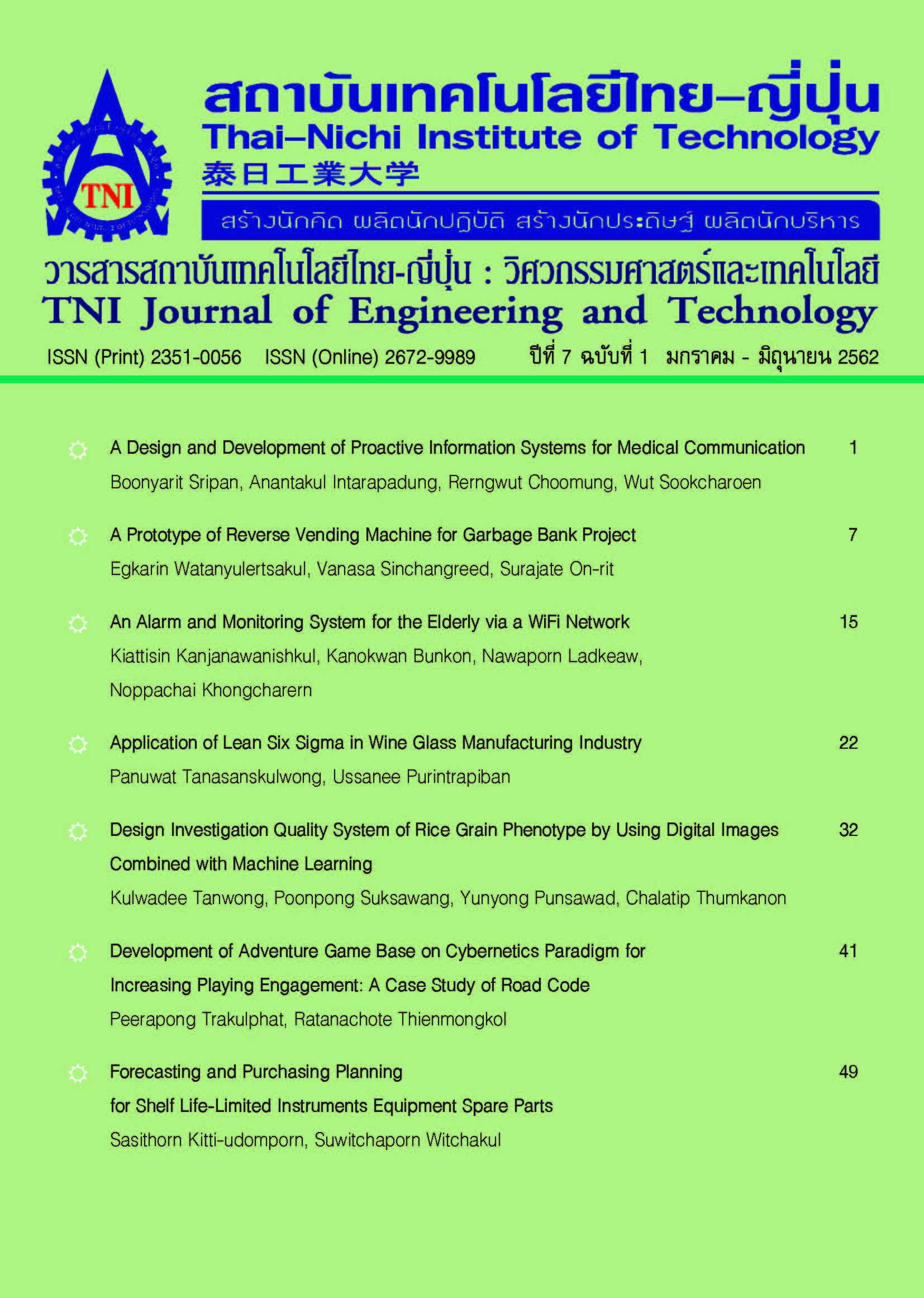Development of Adventure Game Base on Cybernetics Paradigm for Increasing Playing Engagement: A Case Study of Road Code
Main Article Content
Abstract
This research aims to examination and analysis of cybernetic paradigms, development of a new cybernetic-based adventure game and evaluation of the result of prototype games under the usability testing framework. The sample group consisted of game experts (designers, developers, computer graphics) traffic experts, experimental pilot studies and the game testers. The research tools included the following list: specialist interview questions, the prototype game developed from the synthesis, the prototype game developed from cybernetic paradigms, and performance appraisal form. The results were divided into, a simple linear regression analysis could be adapted to utilize with cybernetics in assessing a player’s ability, applied artificial intelligence (AI) to a player’s abilities to create an engagement. Secondly, the development of a new adventure game based on cybernetics helped get a player rating system to adjust the difficulty of the game according to a player’s abilities, the evaluation results of the prototype game under the usability testing framework were overall positive, with a point average 4.07 which meets the objective fulfillment.
Article Details
Article Accepting Policy
The editorial board of Thai-Nichi Institute of Technology is pleased to receive articles from lecturers and experts in the fields of engineering and technology written in Thai or English. The academic work submitted for publication must not be published in any other publication before and must not be under consideration of other journal submissions. Therefore, those interested in participating in the dissemination of work and knowledge can submit their article to the editorial board for further submission to the screening committee to consider publishing in the journal. The articles that can be published include solely research articles. Interested persons can prepare their articles by reviewing recommendations for article authors.
Copyright infringement is solely the responsibility of the author(s) of the article. Articles that have been published must be screened and reviewed for quality from qualified experts approved by the editorial board.
The text that appears within each article published in this research journal is a personal opinion of each author, nothing related to Thai-Nichi Institute of Technology, and other faculty members in the institution in any way. Responsibilities and accuracy for the content of each article are owned by each author. If there is any mistake, each author will be responsible for his/her own article(s).
The editorial board reserves the right not to bring any content, views or comments of articles in the Journal of Thai-Nichi Institute of Technology to publish before receiving permission from the authorized author(s) in writing. The published work is the copyright of the Journal of Thai-Nichi Institute of Technology.
References
Ergonomics of human-system interaction Part 210: Human-centred design for interactive systems, ISO 9241-210, 2019.
M. Csikszentmihalyi, Flow: The Psychology of Optimal Experience. New York: Harper Perennial Modern Classics, 2008.
T. Fullerton, Game Design Workshop: A Playcentric Approach to Creating Innovative Games, 3rd ed. Boca Raton: A K Peters/CRC Press, 2014.
D. ARSENAULT, Narration in the video game. Montreal: University de Montreal, 2006.
N. Fortugno, "Design Principles for Casual Games." 2007. [Online]. Available: https://www.gdcvault.com/play/1019227/Design-Principles-for-Casual. [Accessed: 09-Dec-2016].
N. Wiener, Cybernetics or Control and Communication in the Animal and the Machine, 2nd ed. Cambridge, Mass: The MIT Press, 1965.
W. R. Ashby, An Introduction to Cybernetics. USA: Springer, 1956.
G. O. Matheson, C. Pacione, R. K. Shultz, and M. Klügl, “Leveraging human-centered design in chronic disease prevention.,” American journal of preventive medicine, vol. 48, no. 4, pp. 472–479, 2015.
J. Nielsen, “Usability 101: Introduction to Usability Nielsen Norman Group.” 2012. [Online]. Available: https://www.nngroup.com/articles/usability-101-introduction-to-usability/. [Accessed: 14-Jun-2017].

